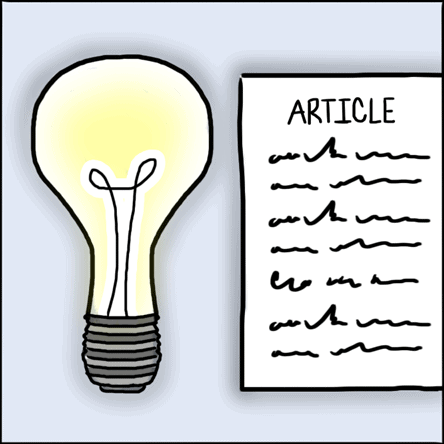©2011-2023 Less Accounting

Since co-starting LessEverything in 2007, I’ve written over 350 blog articles. I never thought I’d spend so much time writing as part of my job. Admittedly, I am not a great writer and I never received A’s in English classes. I didn’t grow up with aspirations to teach, share information or write articles like these. Surprisingly, writing has become an instrumental part of our “success story,” or rather, “We write stuff and other people read it and share it, and eventually someone buys something from us.”
I’ve developed a writing process I use to get the content out of my brain and into a rough draft. Maybe my writing process is common, but it’s something I realized I was doing by accident a few years ago.
I start with an outline. I create a bulleted list with topical points to be enforced in my article. With a bulleted list, I can see the article’s structure and this structure keeps me from going off on a tangent. If the bulleted list is boring, then the article will be boring, too. The outline is a game plan for my article.
Once I have a simple outline in bulleted list form, I move the bullets into headers for the upcoming paragraphs I’m about to write.
I like having sub-headers in my writing for many reasons. I think subconsciously as readers we see them, even if our eyes aren’t there, yet. Our mind starts thinking, “Oh just wait, a really good point is coming.” That’s just a theory but I personally like to see sub headers in articles I read. It also gives you an opportunity to put keywords in the headers and strengthen the SEO prowess of the article.
The next step is to complete my thoughts for each header point by writing a paragraph or two tying in the sub-bullets from the list. I like to keep my articles really short, with a reading time of around five minutes maximum. Within this step I’ll start to see ideas for future articles. I end up creating another Google doc for these tangential ideas.
So I’ve made an outline and I’ve broken that outline into paragraphs. At this point, I start rereading the article. I start combing back through the content looking for ways to simplify the reading and be less vague.
I read the article aloud, again and again. I look for opportunities to add links to other articles we’ve written or link articles that are related.
Also, I try to remove all uses of “that,” “got,” and “it.”
For me the hardest part of writing is wrapping up the idea in a nice little bow. I’m sitting here right now thinking, “Crap, Mark (our editor) is going to have to help me finish this article.” I don’t know why I can’t think of conclusion paragraphs. I really want my conclusions to leave the reader with enough momentum to spark change. “Ugh…help me, Mark.”
Every writer eventually develops their own process. If you’re starting a blog to support your business and don’t know where to begin, try the process I outlined above and then modify it for your own needs.
Side Note: In previous articles, I talked about content development, where we find inspiration for articles, types of articles, and our process for editing.